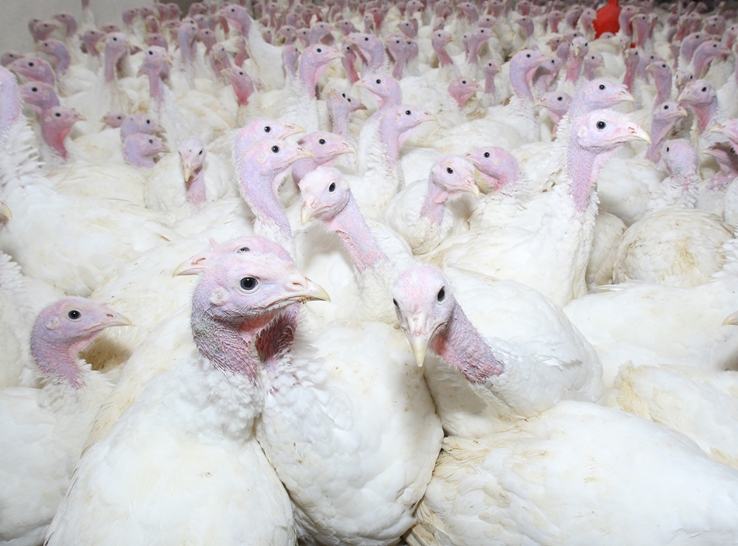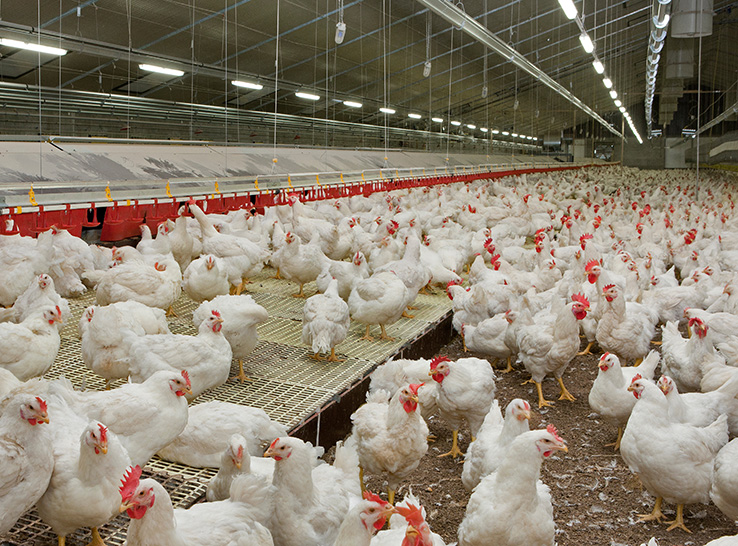Transporting poultry from grow farms to processing plants can be stressful for birds. Add in hot, humid weather or during a brisk cold snap, stress levels increase enough to contribute to weight loss and reduced meat quality, according to Karen Schwean-Lardner, PhD, professor of poultry science, University of Saskatchewan.
“Live transport of poultry can be stressful, yet is necessary,” she said in a presentation at the 2023 Poultry Science Association conference.
“Our research focus is the impact that temperature and relative humidity have on birds. We have very cold winters and typically hot, dry summers.
“But I have to say with climate change, I have had more calls from American companies asking about cold-weather transport.”
Transport temperature tests
Schwean-Lardner and the university research team wanted to determine the upper and lower temperature and humidity limits for moving birds on transport trucks.
Poultry transport trucks often use passive ventilation to handle temperature and humidity. To see how well these systems work, they put temperature and humidity data loggers on trailers and followed them during transport.
In one test where the outside temperature was -22° C (-7° F), they discovered “different ambient conditions even within the same trailer, ranging from cold to very warm,” Schwean-Lardner said.
In a second trailer pulled behind the first one, airflow acted differently. “Now we’re getting cold conditions in the front and hot conditions at the back of the trailer,” she explained.
“On this load, the minimum temperature was -21° C (-6° F) and maximum 22° C (72° F),” she continued. “That’s a 43-degree-C (78-degree-F) difference in temperature on one load.
“We know there are mechanically or actively ventilated trucks; but they are expensive. The number of these truck/trailers is increasing in western Canada for welfare reasons.”
Testing bird responses
Using environmental chambers at the university, Schwean-Lardner and other researchers studied the effects of temperature and relative humidity on birds during simulated trips. Behavioral and physiological responses were measured.
“One of the first responses is thermoregulatory,” she reported. “Birds will pant to get rid of the excess heat. If it’s cold, they’re shivering and performing piloerection. But it’s complicated because there are many factors that are going to make changes here.”
One factor is bird space. Is there enough room for the birds to spread out to cool off? In the cold, birds tunnel to keep warm. If the density is too great, they can’t.
“If these basic thermoregulatory behaviors don’t work, then we start to see physiological changes happening in these birds,” she explained.
Investigators inserted tiny data loggers through the mouth to the crop or gizzard to monitor temperature. They retrieved the loggers after death and downloaded the data.
During one 3-hour simulation, birds were exposed to a range of temperatures. “At 20° C to 22° C (68° F to 72° F) the birds are thermoregulatory and doing just fine,” she said.
“But at -14° C to -17° C (7° F to 1° F), core body temperature was 41° C (106° F). In 3 hours, it dropped to about 27° C (81° F).”
Testing heat, humidity
In another simulation, they tested 12-week-old turkey hens and 16-week-old turkey toms. The birds were exposed to 35° C (95° F) temperature with either 30% or 80% relative humidity.
The toms did not do well in the 80% humidity, so the test was halted. The toms did better at 30% humidity, but core body temperature went up 6° C (10° F).
In the same test, the smaller hens did better than the toms, especially at 80% humidity. Their body core increased but not as much as the toms.
“Bird size, potentially sex, and/or metabolic heat are involved. It’s again complicated. When birds try to thermoregulate, they’re utilizing so much of their body energy to try and maintain that heat,” Schwean-Lardner said.
Body shrink documented
Equally striking was the percent of live body shrink that occurred during simulations in hot and cold conditions.
In the 12-week-old turkey hens, live shrink was 1.5% at 20° C (68° F). But body shrink increased to almost 5% at 35° C (95° F) where more moisture is lost in an attempt to cool, Schwean-Lardner explained.
In a cold simulation with broilers 5 and 6 weeks of age, the birds went from losing just over 1% bodyweight at 20° C to 22° C (68° F to 72° F) to a loss of 4% bodyweight when temperatures dropped to -17° C (1° F).
“These are significant differences in terms of shrink,” she explained. “What’s interesting is that it starts relatively early in the cold phase from 0° C to -8° C (32° F to 18° F). We also see that the smaller birds (5 weeks of age) don’t cope very well with this cold.”
Meat quality issues
“Temperature and relative humidity can also cause an increase in stress levels,” Schwean-Lardner added. “I’m not a meat scientist, but we do know that hot conditions result in lower pH in the muscle and cold conditions result in higher pH.”
Generally, high pH is associated with dark, firm and dry meat while low pH is associated with pale, soft, exudative meat. “In most cases, this is not something consumers are excited to eat,” she added.
“In general, the point is that transportation can be stressful,” Schwean-Lardner continued. “We’ve been trying to figure it out for 20 years…but there are so many little changes that can make a difference in response.
“So, careful control of temperature and relative humidity we know can certainly help, but risk remains during live transport.”





